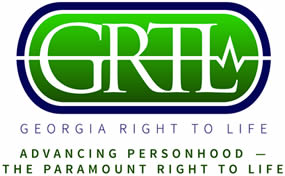 The Un-Choice
The Un-Choice
In a national study of women, 64% of those who aborted felt pressured to do so by others.1 This pressure can become violent.2 65% suffered symptoms of trauma.1 In the year following an abortion, suicide rates are 6-7 times higher.3
Forced Non-Choice …. “I’ll blow her brains out.”
Intense pressure to abort can come from husbands, parents, doctors, partners, counselors, or close friends and family. They may threaten or blackmail a woman into abortion.
These are not idle threats. Coercion can escalate to violence. Women who resist abortion have been beaten, tortured and killed. One husband jumped on his wife’s stomach to force an abortion. A mother forced her daughter at gunpoint to go to the abortion clinic. A woman was forcibly injected by the baby’s father with an abortifacient drug.2
Unwanted Non-Choice … Their Choice, Not Hers.
Reasons women give for having abortions:
• Forced by mother
• Father opposed
• Husband or boyfriend persuaded me• No other option given
• Would have been kicked out• Loss of family’s support
• Lack of support from society• Clinic persuaded me4
In 95% of all cases, the male partner plays a central role in the decision.5 Of men interviewed at abortion clinics 45% recalled urging abortion, including 37% of married men.6 Many of these men reported being justified in being the primary decision maker in the decision to have the abortion.6
Coerced Choice … Taken to the Clinic to Make Sure She Keeps the Appointment
A former abortion clinic security guard testified before the Massachusetts legislature that women were routinely threatened and abused by the boyfriends or husbands who took them to the clinics to make sure they underwent their scheduled abortions.7 Many women are also pressured by clinic staff financially rewarded for selling abortions.8
Forced Choice … Threats Can Escalate to Violence or Murder — the Leading Killer of Pregnant Women
The pressure can escalate. Many pregnant women have been killed by partners trying to prevent the birth, and being pregnant places women at higher risk of being attacked.9
Murder is the leading cause of death among pregnant women.10 92% of women surveyed list domestic violence and assault as the women’s issue that is of highest concern to them.11
Pro-Choice Advocates Are Rightfully Concerned About Coerced Abortions
While citing a different statistic, noted pro-choice ethicist Daniel Callahan, director of the Hastings Center, has acknowledged the same basic problem:
That men have long coerced women into unwanted abortion when it suits their purposes is well-known but rarely mentioned. Data reported by the Alan Guttmacher Institute indicate that some 30 percent of women have an abortion because someone else, not the woman, wants it.14
The Aftermath. Women Coerced into Unwanted Abortions Pay a High Price.
• 31% had health complications afterwards.1
• 65% suffer multiple symptoms of post-traumatic stress disorder.1
• 65% higher risk of clinical depression.15• 10% have immediate complications, some are life-threatening.16
• 3.5x higher risk of death from all causes.17• A 6-7x higher rate of suicide compared to women giving birth.3
Forced Abortions are Preventable
It would only take a few minutes for abortion counselors to inquire of a pregnant women: “Is someone else encouraging you to have this abortion? Do you want this abortion to satisfy your own needs or are you looking to do this to please someone else? Are you feeling pressured to have this abortion by any other person? Do you feel any attachment to this pregnancy or any desire to keep it?”
These questions could save countless women from unwanted abortions.
These questions can lead to referrals to family and intervention counseling, or shelters from abuse, which could help hundreds of thousands of women to avoid unwanted abortions.
These questions can help save lives. By helping women avoid unwanted abortions we are helping them to welcome an unexpected baby into the world, one that she wants, even if her loved ones don’t. But also, with good referrals we can also help her find the resources and counseling she needs to convince her boyfriend, husband, parents, or other pressuring parties that they should respect her desires and welcome her child into their lives too. With time, most people can adjust and welcome an “unexpected” baby into their lives.
But today, abortion providers are free to ignore these questions. And sadly, to save time during patient intake, most do.
The sad reality is that many abortion providers simply do abortions on request, no questions asked. Whenever they fail to screen for coercion or other risk factors, they are neglecting their obligation to their patients and missing the opportunity to help women in the ways they want and deserve.
The Prevention of Coerced and Unsafe Abortions Act simply defines that it is an act of medical negligence not to make at least a good faith effort to screen for evidence of coercion. It further provides that only the woman can hold the abortion provider accountable for any failure to do proper screening. This act does not interfere with the private decision of a woman and her doctor. But it does allow women to better hold doctors accountable for providing adequate screening and counseling.
American Voters Are Concerned About Coercion
Even though Americans have been kept in the dark about unwanted abortions, nearly half of voters believe coerced abortion is common.13 Voters support candidates who advocate legislation holding abortionists liable for failing to screen for evidence of coercion.13
